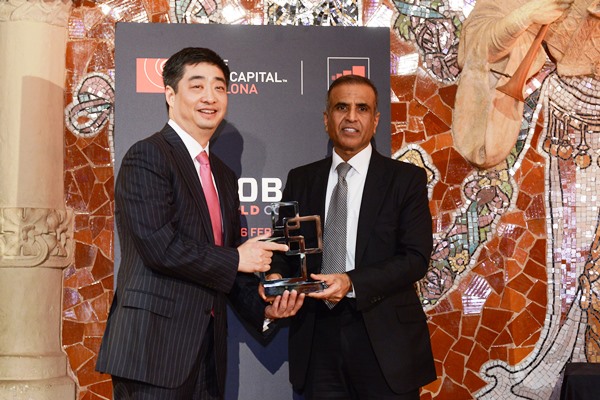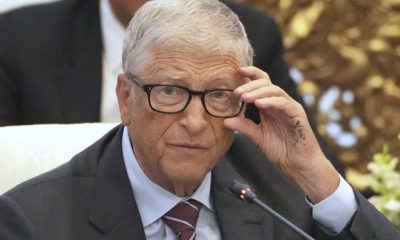Business
China’s Huawei Set to Lead Global Charge to 5G Networks
China’s Huawei is forging closer commercial ties with big telecom operators across Europe and Asia, putting the company in prime position to lead the global race for next-generation 5G networks, partnering with over 30 global carriers.
On Sunday, ahead of the opening of Mobile World Congress, being held Barcelona, Spain; the GSMA presented Huawei Technologies with the 2018 Award for Outstanding Contribution to the Mobile Industry. The award was presented at a special ceremony, where Huawei was recognized for decades of advocating new technology standards, driving digital transformation, and building out the digital ecosystem.
At the ceremony, Ken Hu, Rotating and Acting CEO at Huawei, accepted the award on behalf of the company. “Over the years, we have worked with many of you to advance 3G, 4G – and now 5G and other ICT technologies,” he said, ” Huawei has connected over one-third of the world’s population. Since the mobile industry is evolving, it will soon become the cornerstone of a fully connected, intelligent world.”
World’s first company offering end-to-end 5G solution
On the same day at Mobile World Congress, Huawei launched its HUAWEI 5G customer-premises equipment (CPE), the world’s first commercial terminal device supporting the globally recognized 3GPP telecommunication standard for 5G. This device marks a milestone as Huawei sets the stage for the next generation of wireless connectivity.
To ensure peak performance from its 5G CPE, Huawei uses its self-developed Balong 5G01 chipset – the world’s first commercial chipset supporting the 3GPP standard for 5G, with theoretical downlink speeds of up to 2.3Gbps. It supports 5G across all frequency bands including sub-6GHz and millimeter wave (mmWave) to offer a complete 5G solution suitable for multiple use cases. The Balong 5G01 makes Huawei the first company offering an end-to-end 5G solution through its network, devices and chipset-level capabilities.
Ken Hu noted, “5G standards and technologies are maturing. Huawei will continue to develop new technologies and work with industry partners to develop a 5G ecosystem. The ultimate goal is to build a fully connected, intelligent world.”
Years of investment for the moment of breakthrough
Huawei has been innovating and investing in 5G for years. Since 2009, Huawei has invested US$600 million in research and development into 5G technologies from connected vehicles and smart homes to AR/VR and hologram videos. At present, Huawei has more than 2,000 5G R&D engineers and 11 5G R&D centers around the world, including three centers in Europe and six centers in China. Huawei has forged alliances with ecosystem partners from around the world. By March 2016, HUawei had more than 30 partners, including leading global carriers, industry alliances, organizations, and vertical leaders.
5G networks, now in the testing stage, will rely on denser arrays of small antennas and the cloud to offer data speeds up to 50 or 100 times faster than current 4G networks and serve as critical infrastructure for a range of industries.
2018 will mark the first year of commercialization for 5G, the CEO of the maker of fixed line and mobile network equipment and the world’s No.3 smartphone maker told reporters.
Huawei has partnered with over 30 global telecommunication carriers, including Vodafone, Softbank, T-Mobile, BT, Telefonica, China Mobile and China Telecom. In 2017, Huawei began testing 5G commercial networks with partners. The Chinese equipment maker is conducting pre-commercial 5G trials in many of the world’s biggest cities, including Seoul, Tokyo, London, Milan and Vancouver in Canada, Hu said. Huawei completed interoperability testing and started offering the first round of 5G commercial networks in 2018.
A digital transformation market worth US$23 trillion
Mobile World Congress, the wireless industry’s biggest conference, begins on Monday in Barcelona, where more than 100,000 people are set to see the latest smartphones, artificial intelligence devices and autonomous drones exhibited by roughly 2,300 companies. This year, the organizer GSMA has focused the event around eight themes including AI, innovation and Industry 4.0.
The 4th Industrial Revolution – where ICT networks are the foundation and AI is the enabler – is bringing us to an intelligent world where all things will sense, all things will be connected, and all things will be intelligent. This, according to Huawei’s Global Industry Vision (GIV) will create a digital transformation market worth US$23 trillion.
At the Mobile World Congress (MWC) 2018, Huawei is presenting technologies and solutions for 5G, All-Cloud network, video, and IoT. In particular, it will focus on the three key issues of better connections, better business growth, and better experience.
Comments




























